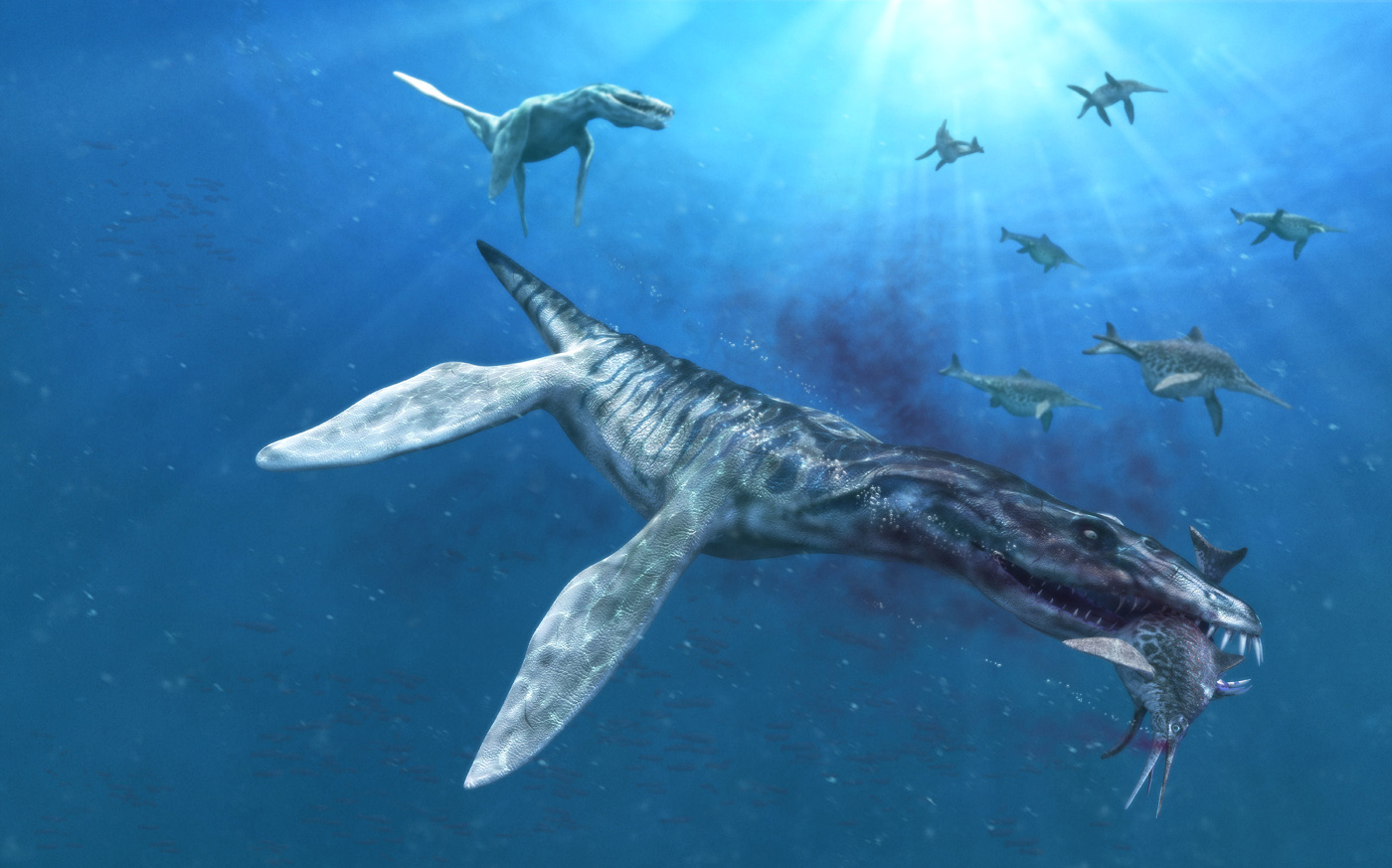DINOSAURS OF THE PRE-HISTORIC WORLD - COUNT DOWN
 |
WILLIAM BUCKLAND |
THE FIRST DINOSAUR TO BE NAMED:
A number of dinosaurs had been named before the word "DINOSAUR" itself had been coined. DINOSAURIA meaning "fearfully great lizards" was proposed as a name for the group by Richard Owen in 1842. The Reverend William Buckland was the first to name a dinosaur, in 1824. He called it MEGALOSAURUS, meaning "GREAT LIZARD".
HEAVIEST DINOSAURS EVER DISCOVERED:
.jpg) |
BRUHATHKAYOSAURUS |
1. BRUHATHKAYOSAURUS: 126 tonnes
Fossil remains of this dinosaur were found in southern India. Some authorities have estimated it as having weighed as much as 220 tonnes, more than a blue whale, but such claims have been questioned.
2. AMPHICOELIAS: 122 tonnes
Its massive size, with a length of some 25 m (82 ft) has been extrapolated from vertebrae fragments discovered in Colorado in 1877, but since lost.
3. PUERTASAURUS: 80-100 tonnes
Its huge size has been estimated form partial remains found in Patagonia in 2001.
4. ARGENTINOSAURUS: 60-88 tonnes
An Argentinean farmer discovered a 1.8 m (6 ft) bone in 1988. It was found to be the shinbone of a previously unknown dinosaur, which was given the name Argentinosaurus.
5. ARGYRSAURUS: 80 tonnes
This South American dinosaur's name means 'SILVER LIZARD'
6. SAUROPOSEIDON: 50-60 tonnes
Known only from vertebrae discovered in Oklahoma in 1994, its name means 'Earthquake lizard-god'.
7. PARALITITAN: 59 tonnes
Remains discovered in 2001 in the Sahara Desert in Egypt suggest that this was a giant plant-eater.
8. ANTARCTOSAURUS: 45-50 tonnes
The creature's thigh bone alone measures 2.3 m (7.5 ft) and a total length of 18 m (60 ft) has been estimated. Some authorities have put its weight as high as 80 tonnes.
9. TURIASAURUS: 40-48 tonnes
The largest dinosaur yet discovered in Europe, remains of Turiasaurus were unearthed in Spain in 2003.
10. SUPERSAURUS: 35-40 tonnes
Fragments of Supersaurus were unearthed in Colorado in 1972. Another more complete specimen, known as "Jimbo", has been discovered in Wyoming and is undergoing examination.
SMALLEST DINOSAURS:
1.MICROPACHYCEPHALOSAURUS - max. size - 20 in.
Micropachycephalosaurus is ironically the longest name for the smallest dinosaur. Discovered in Argentina, Mussaurus - meaning 'MOUSE LIZARD' - is the smallest complete dinosaur skeleton found.
2. SALTOPUS - max. size - 23 in.
 |
MICROPACHYCEPHALOSAURUS |
3. COMPSOGNATHUS - max. size - 24 in.
FRUITADENS - max. size - 24 in.
MICROCERATOPS - max. size - 24 in.
YANDANGORNIS - max. size - 24 in.
7. BAMBIRAPTOR - max. size - 27 in.
8. MICRORAPTOR - max. size - 33in.
9. LESOTHOSAURUS - max. size - 35 in.
10. SINOSAUROPTERYX - max. size - 39 in.
WANNANOSAURUS - max. size - 39 in.
COUNTRIES WITH MOST DINOSAURS:
1. USA - no. of dinosaurs - 89
2. CHINA - no. of dinosaurs - 60
3. MONGOLIA - no. of dinosaurs - 48
4. CANADA - no. of dinosaurs - 37
5. ARGENTINA - no. of dinosaurs - 29
6. UK - no. of dinosaurs - 26
7. FRANCE - no. of dinosaurs - 13
8. GERMANY - no. of dinosaurs - 10
9. SPAIN - no. of dinosaurs - 9
10. TANZANIA - no. of dinosaurs - 9
5 BEASTS OF THE PREHISTORIC DEEP:
Dinosaurs may have been the lords of the land, but they weren't the only giants of the prehistoric world. The ancient oceans were also inhabited by beasts of nightmare proportions.
LIOPLEURODON:
This savage marine reptile of the late Jurassic era grew to around 25 m (82 ft), and preyed on prehistoric crocodiles and other marine reptiles such as ICHTHYOSAURS.
BASILOSAURUS:
The erroneously named BASILOSAURUS - 'King Lizard' was not actually a reptile, but a deadly ancestor of the whale. Its long body - up to 26 m (85 ft) - gave it an appearance more like a sea snake than a modern cetacean.
DUNKLEOSTEUS:
This massive (8-10 m / 26-33 ft) fish had an armour-plated head and two long blades instead of teeth, which it used to crush any prehistoric prey it could find including sharks.
MEGALODON SHARK:
These fearsome fish may have grown to lengths of 16 m (50 ft) and had the most powerful bite of any creature known to have existed on Earth.
GIANT SEA SCORPION:
The discovery of a huge fossilized claw in 2007 revealed that giant sea scorpions of coastal swamps may have measured up to 2.5 m (8.2 ft).





